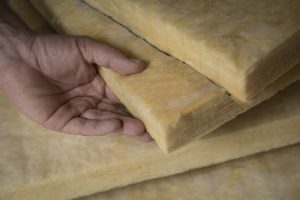
Insulation can improve a home’s energy efficiency, but the efficacy of insulation is dependent on how it’s  installed. Insulation products can only perform optimally if they are installed perfectly. Batt insulation, for example, will only achieve its R-value when it isn’t compressed. This occurs most often in roof assemblies where conventional trusses meet the exterior top wall plate. This space it too small to allow for full-depth batt insulation.
installed. Insulation products can only perform optimally if they are installed perfectly. Batt insulation, for example, will only achieve its R-value when it isn’t compressed. This occurs most often in roof assemblies where conventional trusses meet the exterior top wall plate. This space it too small to allow for full-depth batt insulation.
The best solution? Matthew Brown, CGP, APA Engineered Wood Specialist recommends raised-heel trusses: “In roofing assemblies, conventional trusses can restrict insulation space above the exterior wall top plate, resulting in compressed insulation. Raised-heel trusses can provide a significant boost to the insulating power of a home.”
Also known as energy-heel trusses, a raised-heel truss is fitted with a heel where the bottom chord intersects with the perimeter plate. The heel raises the top chord, allowing sufficient space for the batt insulation to be installed without compression.
A study by Nexant Energy for the APA (Engineered Wood Association) discovered that using raised-heel trusses can result in a 4-6% reduction in annual energy costs. From the Study: “While it’s fairly well known that wood products sequester carbon and tend to require less energy to manufacture than other building materials, their performance related to operational energy efficiency is sometimes overlooked. From a thermal perspective, wood-frame building enclosures are inherently more efficient than steel-frame, concrete, or masonry construction—because of the insulating qualities of the wood structural elements, including studs, columns, beams and floors, and because wood stud walls are easy to insulate.”
The reason raised-heel trusses make it easy to insulate is that the insulation has enough space and doesn’t have to be compressed. Raised-heel trusses mean full depth insulation can extend to the outer edge of the top plate. In most climate zones the IEC then allows a lower R-value of insulation to be used over the entire attic area to achieve the same energy requirements. Check with your local energy codes to see if they allow that reduction but regardless raised-heel trusses and proper insulation installation will provide better energy values.
